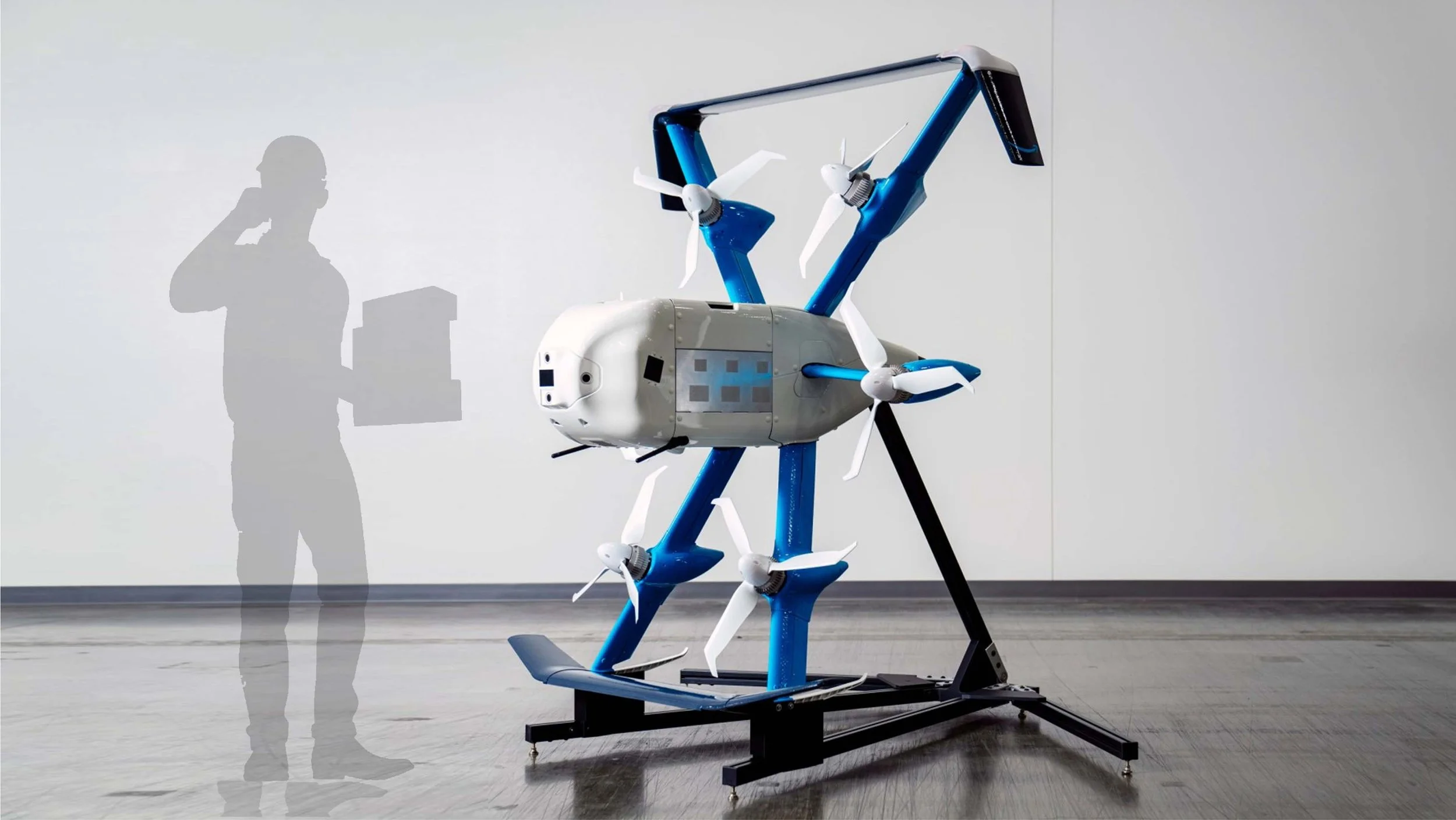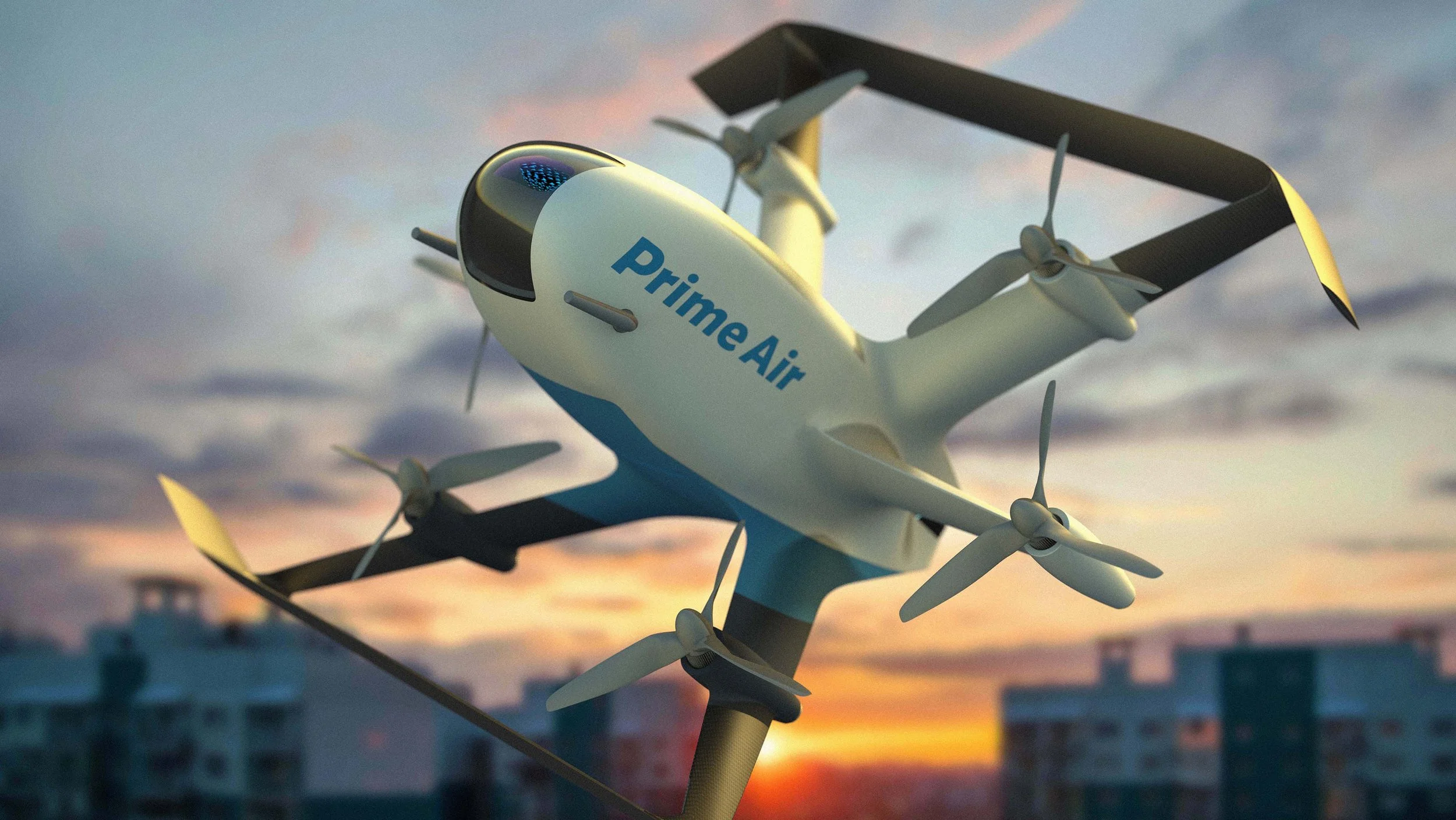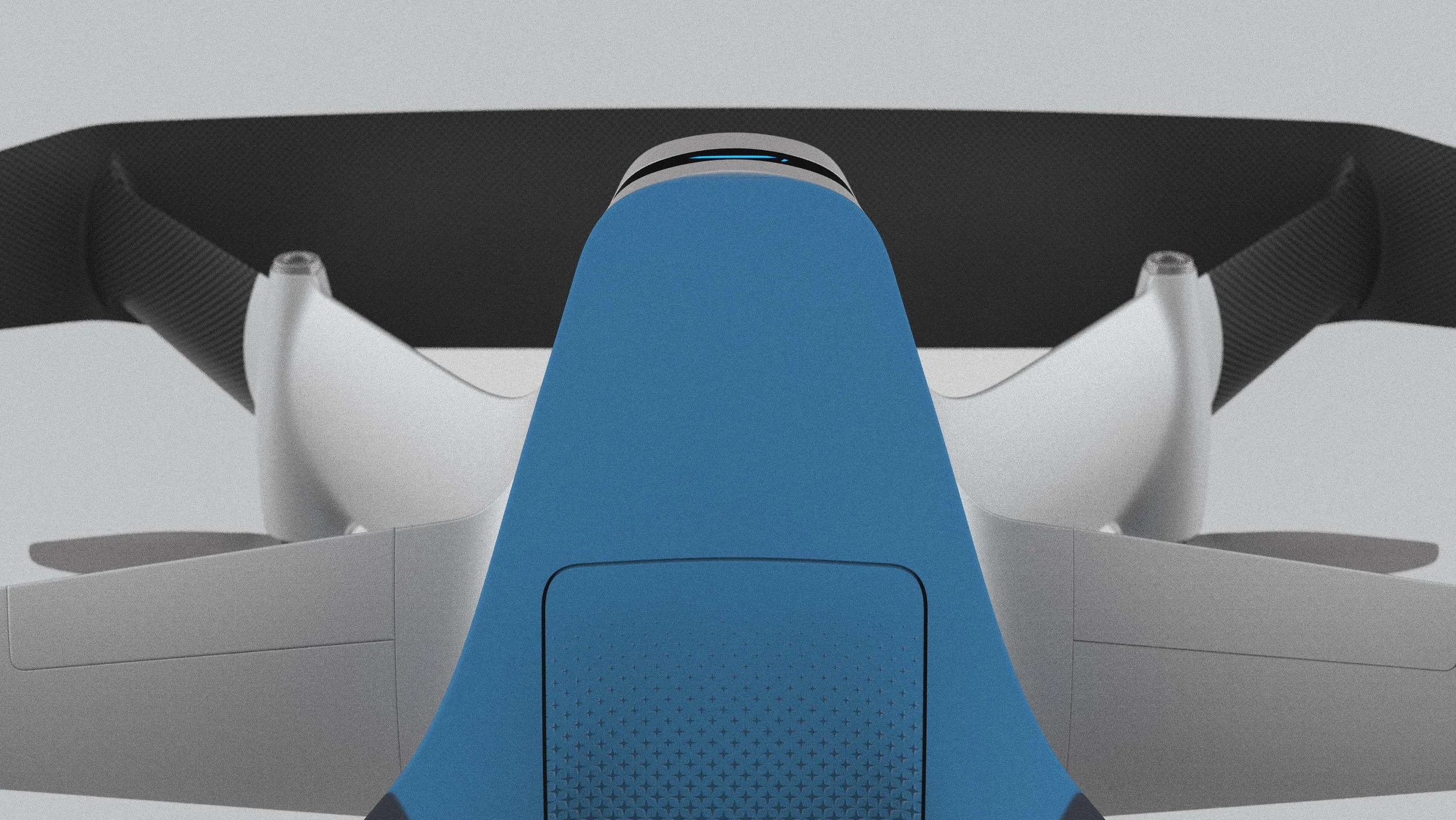A purely speculative project, the MK-X0 delivery drone is a conceptual re-imagining of Prime Air’s MK-30 delivery drones.
For this project, the product package – including form factor and configuration – are derived from publicly available imagery of the MK-30. Proportions and component layouts are preserved but integrated into a forward looking fluidic design.
Publicly revealed in October 2023, Prime Air’s MK-30 drones are scheduled to begin delivery to customers in three U.S. locations as well as cities in Italy and the UK by the end of 2024.
Built on several earlier rounds of prototyping and iteration, the MK-30 was developed in 18 months by Prime Air’s engineering team. It represents a huge step forward in performance, with increased range, quieter operation, and improved safety features.
The MK-X0 incorporates the MK–30’s general geometry into a form that blends low resistance and sculpted surfaces.
The design features a simplified smooth front that transitions through the wings into a series of dynamic sweeping edges intended to capture a ‘wind-etched’ feel. The surfaces derive from aero forms and feature lightweight materials prominently as a celebration of the speed and capability of Prime Air.
In addition to preserving the overall dimensions / configuration of the production drone, the MK-X0 incorporates the same vertical delivery approach.
This overall design approach also lends itself well to the drones operation. The MK series take off and deliver in an upright, tilted-back orientation, while travel is performed in a more horizontal orientation.
While this project doesn’t delve into deeper usability or manufacturing issues, it demonstrates how form may be used to add efficiencies into Prime Air’s drone design. Inspirational concepting can also help a team explore scenarios, build confidence in an approach or align on competing product visions.
Further ID development would be beneficial in exploring ways to enhance the customer experience around all aspects of delivery – including consideration for the needs of various user groups including warehouse associates, service technicians and end customers.
Though the MK–X0‘s main body retains the same overall volume as the production drone, more carefully considered exterior surfaces reduces the visual impact of the mass.
Livery, including additional graphics and color elements can be used to further accentuate how the form reads or otherwise tune the expressiveness of the drone – or to better adapt to other vessels in Amazon or 3rd parties fleets.
Forward facing sensors are placed behind a window in order to simplify the overall appearance and to provide a less intimidating framing for cameras and other surveillance elements. This approach –a simplified space helmet like window – can be utilized to improve drone performance by decreasing resistance / turbulence from today’s baseline design.
Visual elements beyond form, including graphics, and CMF elements can be used to indicate functionality or key component areas – such as the cargo hatch and bay – as well as to reinforce existing design elements found on other Prime Air physical and digital touchpoints.
While the MK-X0 provides a potential vision for a future Prime Air drone, the exploration is limited to a desktop visual exercise. A more ind-depth ID program would incorporate a foundational exploration in usability and cx factors.










